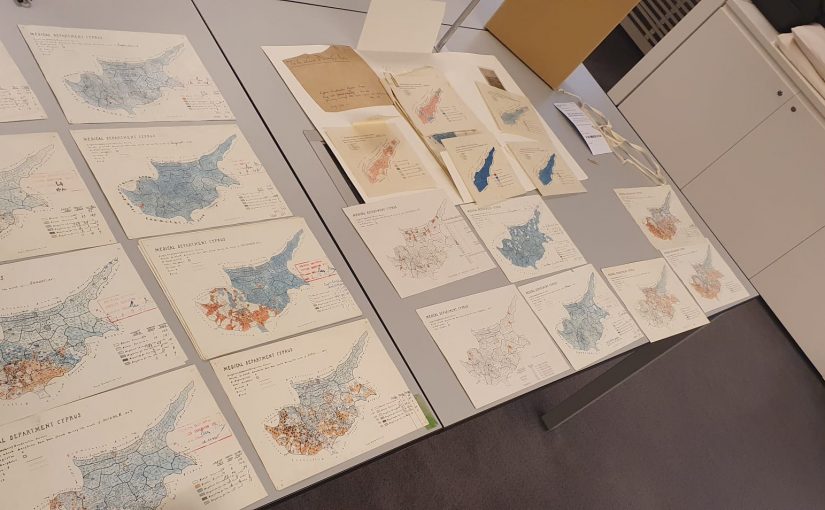I was revisiting a paper that really inspired my thinking before starting this project. It builds on the work of Leanne Betasamosake Simpson, Milton Santos and Angelo Celli to question the way in which ‘land-use’ is taken for granted in relation to considering its effects on disease.
I was then recently introduced through RESET to this work by a colleague at University of Helsinki. This paper look at how malaria declined in Finland due to social factors, rather than environmental or medical intervention factors per se. It suggested that the (cross)location or spatialization of people in relation to land ownership, tenure and justice was the key determining factor for the disappearance of malaria: https://researchportal.helsinki.fi/en/publications/the-decline-of-malaria-in-finland-the-impact-of-the-vector-and-so.
This reminded me of of some earlier reading in my PhD on land tenure in Cyprus and the movement of mosquitos across internal legal and informal boundaries within Cyprus. In particular how the British Empire’s land and social reform of Cyprus (forced enclosure and transformation from common land tenure into private estates) led to famine and environmental degradation which were then blamed back on Cypriots.
The historical assumption in Cyprus is that malaria was always really bad, but the aforementioned papers open up the question of whether the reforms introduced under colonial rule exacerbated malaria, giving the colonial officers the then justification for saving people from malaria, just as was done with ‘the ruined landscape narrative’? I don’t know but hopefully my current archival work will enable me to test this hypothesis or at least make more sense of what was happening.
There also the key motivation for malaria reduction in Cyprus to be considered, being explicitly the fact that it was badly effecting the many colonial troops moving via Cyprus to multiple locations throughout Empire.
Side note on colonialism of the future
On a side note, I have an additional hunch that there may be some category reproduction issues (a kind of colonialism of the future) sitting within all this around land that I will need to be sensitive to when trying to explore this hypothesis. Specifically, when thinking about what this archival research means for the future, seeing as my project is future orientated.
What I mean by category reproduction issues and colonialism of the future is perhaps best explained by some work I did on a land-use science project. In this work myself and some land use scientists were tasked with building land-use scenarios for different futures. One of the futures was we broadly called a degrowth scenario.
We were using land-use models to break up the landscape up into specific units such as arable land, nature, urban, grassland etc. So now when we tried to model a degrowth future, it was modelled according to whether there was less or more of each of these categories of land-use and their spatial distribution.
This meant that a degrowth future from the perspective of the current status-quo on land-use appears to be a quantitative subtraction (or addition) of the specific units of land use. More or less: arable land, nature, urban, grassland etc. This promoted an instinctually austere understanding of a degrowth future, as it appears as a less human land use and more nature by comparison to the present.
But this was false. A degrowth future was not primarily about a quantitative difference in comparison to present categories of land-use. I mean that will happen. It is about ditching the nature-culture dichotomy. It is about a qualitative difference in categories based on a re-understanding of ecology and biology, found in an intimate experience and attention to animals, plants, soils etc., that reveals a better understanding of phenomenon to do with succession, trophic levels, trophic cascades, naturalisation of species, and a whole variety of regenerative practices that have been practised by indigenous peoples, peasants and land practitioners worldwide.
Returning to my land-use modelling, it means that the categories of ‘nature’ versus ‘arable’ land-use make no ecological, social or hydrological sense in a degrowth future. The land would be categorised in a fundamentally different way. For example there could be forest gardens and woodland rather than forests, or intercropping, mixed farming, agriwilding and land-sharing rather than nature and arable fields. All these categories are not merely culturally subjective translations of the same thing; they describe entirely different socio-ecologies. And it does not matter how complex your models categories are if it tries to map the future by projecting present categories.
The status quo and authority of the categories used to model is thus inherently static and stuck and unable to realize or see transformation. With different category names merely being seen as subjective cultural wish-wash. The status quo reproduces its categories even when it thinks about change. The status quo can only see change according to its current categories. Instead of rethinking land-use categories it simply reproduces them into the future as variations of the present, despite the categories themselves being the issue. And all of this is built into the representational technologies used to think with. In that sense the future is colonised.
